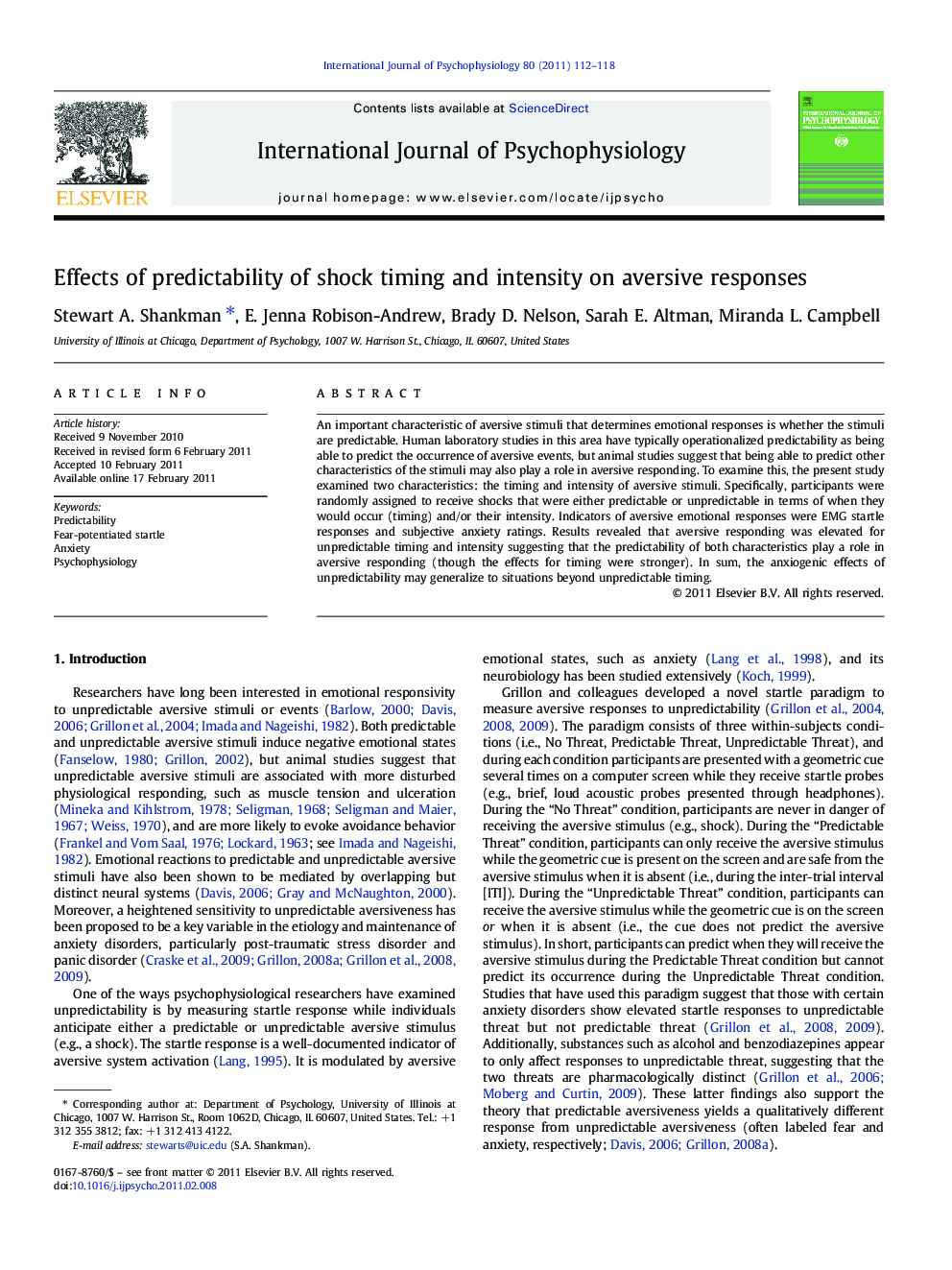| کد مقاله | کد نشریه | سال انتشار | مقاله انگلیسی | نسخه تمام متن |
|---|---|---|---|---|
| 931423 | 1474455 | 2011 | 7 صفحه PDF | دانلود رایگان |

An important characteristic of aversive stimuli that determines emotional responses is whether the stimuli are predictable. Human laboratory studies in this area have typically operationalized predictability as being able to predict the occurrence of aversive events, but animal studies suggest that being able to predict other characteristics of the stimuli may also play a role in aversive responding. To examine this, the present study examined two characteristics: the timing and intensity of aversive stimuli. Specifically, participants were randomly assigned to receive shocks that were either predictable or unpredictable in terms of when they would occur (timing) and/or their intensity. Indicators of aversive emotional responses were EMG startle responses and subjective anxiety ratings. Results revealed that aversive responding was elevated for unpredictable timing and intensity suggesting that the predictability of both characteristics play a role in aversive responding (though the effects for timing were stronger). In sum, the anxiogenic effects of unpredictability may generalize to situations beyond unpredictable timing.
Research Highlights
► Both unpredictable and predictable aversive events lead to negative emotions.
► However, unpredictable aversive events lead to more intense anxious responding.
► Most studies manipulate predictability of timing, but not other characteristics.
► We found that unpredictable timing or intensity of shock elevated anxious responding.
► Anxiety may arise when multiple features of aversive stimuli are unpredictable.
Journal: International Journal of Psychophysiology - Volume 80, Issue 2, May 2011, Pages 112–118